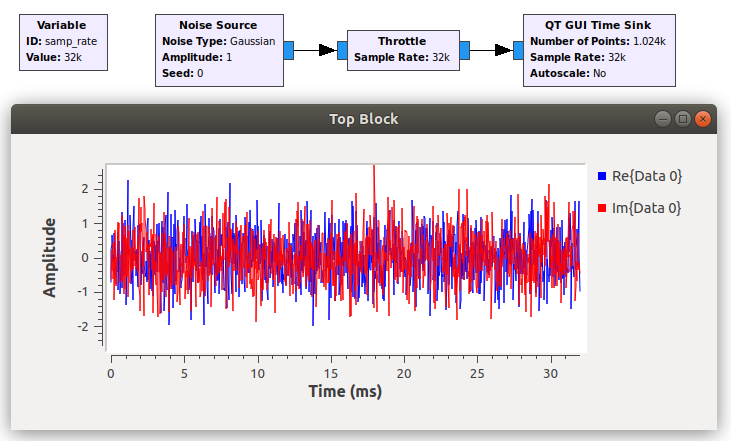Noise Source: Difference between revisions
Jump to navigation
Jump to search
(Created page with "Produces a "noise" signal using either a Gaussian or Uniform distribution Supports output of type complex, float, int, or short. Args: * Noise Type - the random distribution...") |
No edit summary |
||
| Line 7: | Line 7: | ||
* Amplitude - the standard deviation of a 1-d noise process. If this is the complex source, this parameter is split among the real and imaginary parts | * Amplitude - the standard deviation of a 1-d noise process. If this is the complex source, this parameter is split among the real and imaginary parts | ||
* Seed - seed for random generators. Note that for uniform and Gaussian distributions, this should be a negative number | * Seed - seed for random generators. Note that for uniform and Gaussian distributions, this should be a negative number | ||
Example Flowgraph: | |||
[[File:Noise-source-ex.png]] | |||
Revision as of 05:21, 27 December 2018
Produces a "noise" signal using either a Gaussian or Uniform distribution
Supports output of type complex, float, int, or short.
Args:
- Noise Type - the random distribution to use, only Gaussian and Uniform are supported
- Amplitude - the standard deviation of a 1-d noise process. If this is the complex source, this parameter is split among the real and imaginary parts
- Seed - seed for random generators. Note that for uniform and Gaussian distributions, this should be a negative number
Example Flowgraph:
